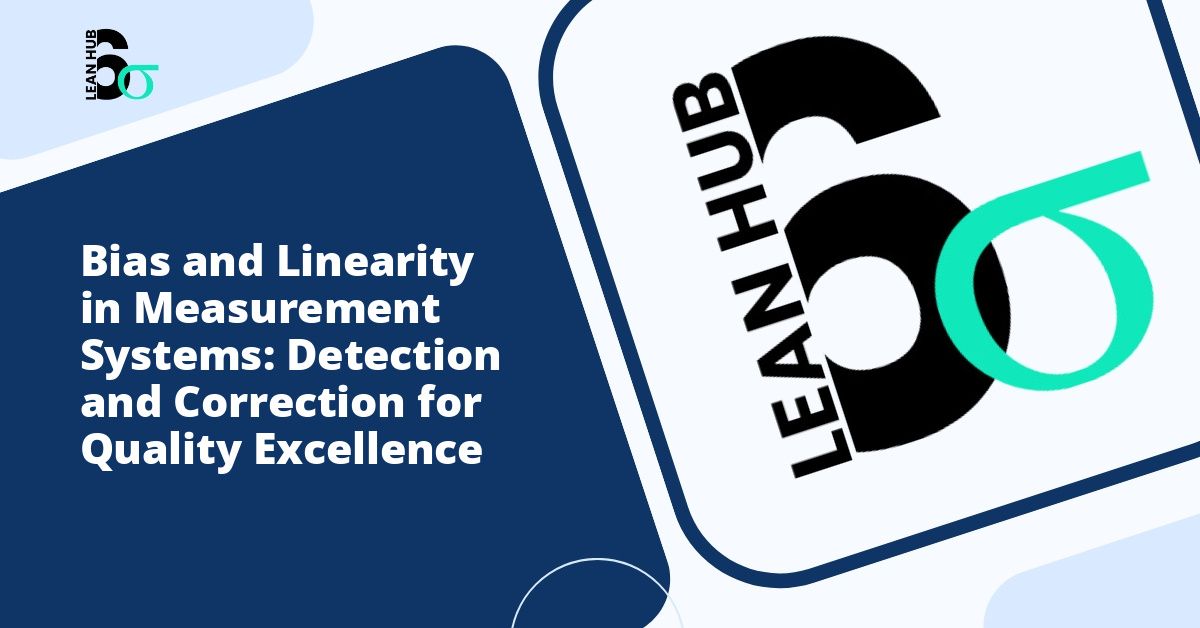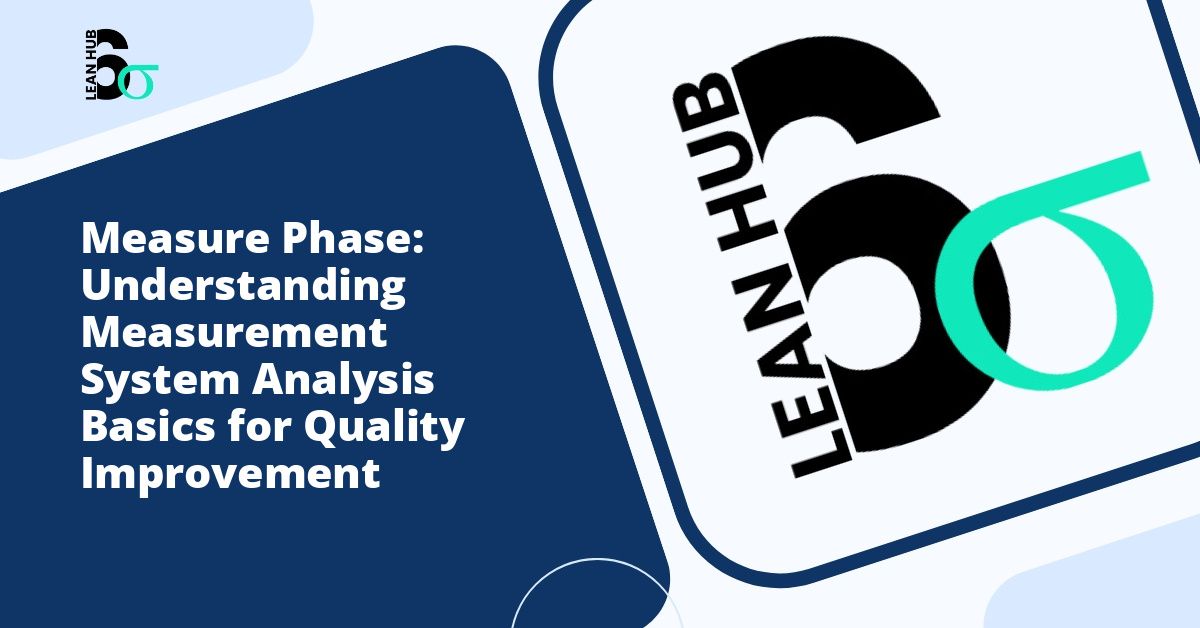In the world of quality management and process improvement, the accuracy of measurement systems forms the foundation of reliable decision-making. Whether you are implementing lean six sigma methodologies or simply working to enhance operational efficiency, understanding measurement system bias and linearity is essential for achieving consistent, trustworthy results.
This comprehensive guide explores the critical concepts of bias and linearity in measurement systems, how to detect these issues, and proven methods for correction. You might also enjoy reading about Sampling Methods in Six Sigma: Understanding Random, Stratified, and Systematic Sampling Techniques.
Understanding Measurement System Analysis
Before diving into bias and linearity specifically, it is important to understand what measurement system analysis (MSA) encompasses. MSA is a scientific methodology used to evaluate the quality of measurement systems and ensure they provide accurate, precise, and reliable data. In the recognize phase of any quality improvement project, identifying potential measurement issues becomes a top priority. You might also enjoy reading about Understanding Process Capability Indices: What the Numbers Really Mean for Quality Control.
A measurement system includes all instruments, operators, procedures, software, and environmental conditions that contribute to obtaining measurements. When these systems contain errors, they can lead to incorrect conclusions and flawed improvement initiatives. You might also enjoy reading about Voice of Process: Measuring What Your Process Is Actually Doing.
What is Bias in Measurement Systems?
Bias represents the difference between the observed average measurement value and the true reference value. In simpler terms, bias is the systematic error that causes all measurements to shift in one direction, either consistently higher or lower than the actual value.
Types of Bias
Several types of bias can affect measurement systems:
- Operator Bias: Occurs when different operators consistently measure the same part differently due to technique variations or interpretation differences
- Equipment Bias: Results from instrument calibration issues or inherent equipment limitations
- Environmental Bias: Caused by temperature, humidity, or other environmental factors affecting measurements
- Method Bias: Stems from flaws in the measurement procedure itself
Impact of Bias on Quality Initiatives
During the recognize phase of lean six sigma projects, undetected bias can significantly derail improvement efforts. If your measurement system consistently reports values that are 0.5 units higher than reality, you might believe a process is performing within specifications when it actually is not. This false confidence can result in shipping defective products or missing opportunities for genuine improvement.
Understanding Linearity in Measurement Systems
Linearity refers to the consistency of bias across the entire operating range of a measurement instrument. An ideal measurement system maintains the same level of accuracy whether measuring small, medium, or large values. When linearity problems exist, the bias changes depending on the size of the measurement being taken.
For example, a scale might measure lightweight items accurately but consistently overestimate the weight of heavier objects. This inconsistent bias across the measurement range indicates a linearity problem.
Why Linearity Matters
Linearity issues are particularly problematic because they are less obvious than constant bias. While constant bias shifts all measurements uniformly, linearity problems create variable errors that depend on the measured value. This variability makes it difficult to apply simple correction factors and can lead to different parts of your process having different levels of measurement accuracy.
Detecting Bias in Measurement Systems
Identifying bias requires systematic testing using reference standards with known values. The following methods are commonly employed during the recognize phase of process improvement initiatives.
Reference Standard Method
This approach involves measuring a reference standard with a known true value multiple times and comparing the average observed value to the true value. The steps include:
- Obtain a certified reference standard with a known value traceable to national standards
- Have a single operator measure the reference standard at least 10 times
- Calculate the average of all measurements
- Subtract the true value from the average observed value to determine bias
- Perform statistical testing to determine if the bias is significant
Interpreting Bias Results
Once you calculate bias, you must determine whether it is statistically significant and practically significant. A small numerical bias might be statistically detectable but too small to matter for your application. Conversely, even a bias that falls within statistical confidence intervals might be large enough to cause quality problems in precision applications.
In lean six sigma projects, the tolerance and specification limits of your process help determine acceptable bias levels. Generally, bias should be less than 5 to 10 percent of the process tolerance to maintain system integrity.
Detecting Linearity Problems
Linearity assessment requires testing across the entire operating range of the measurement system. This process is more involved than bias detection but provides critical insights.
Linearity Study Procedure
A proper linearity study follows these steps:
- Select multiple reference standards spanning the entire measurement range (typically 5 standards at different levels)
- Have a single operator measure each reference standard multiple times (at least 10 measurements per standard)
- Calculate the bias at each reference level
- Plot bias values against reference values to visualize linearity
- Perform regression analysis to determine if a significant linear relationship exists between bias and measured value
Analyzing Linearity Results
When plotting bias against reference values, a horizontal line near zero indicates good linearity. A sloped line suggests that bias changes with the size of the measurement, indicating a linearity problem. The regression analysis provides statistical evidence of whether the observed slope is significant or merely due to random variation.
Correcting Bias and Linearity Issues
Once you identify measurement system problems during the recognize phase, correction becomes the next priority. The appropriate correction method depends on the type and severity of the problem.
Addressing Constant Bias
When bias is constant across the measurement range, several correction strategies exist:
- Calibration Adjustment: Adjust the instrument using calibration procedures to eliminate the offset
- Mathematical Correction: Subtract the known bias from all future measurements
- Equipment Repair or Replacement: If calibration cannot eliminate bias, the equipment may require servicing or replacement
- Procedure Modification: Change measurement procedures to eliminate sources of systematic error
Correcting Linearity Problems
Linearity issues typically require more complex solutions:
- Multi-point Calibration: Calibrate the instrument at multiple points across its range rather than a single point
- Range Restriction: Limit the use of the instrument to the portion of its range where linearity is acceptable
- Mathematical Correction Function: Apply a correction equation based on the regression analysis to adjust measurements
- Equipment Upgrade: Replace the instrument with one that maintains linearity across the required range
Best Practices for Maintaining Measurement System Integrity
Preventing bias and linearity problems is more efficient than detecting and correcting them. Implementing these best practices helps maintain measurement system quality:
- Establish regular calibration schedules based on manufacturer recommendations and usage patterns
- Train all operators thoroughly on proper measurement techniques to minimize operator bias
- Control environmental conditions that might affect measurements
- Conduct periodic measurement system analysis studies as part of lean six sigma initiatives
- Document all measurement procedures clearly and enforce compliance
- Implement control charts for measurement systems to detect drift over time
Integration with Lean Six Sigma Methodology
Measurement system analysis, including bias and linearity studies, plays a crucial role in the recognize phase of lean six sigma projects. Before you can improve a process, you must first ensure you can measure it accurately. Many improvement initiatives have failed not because the solutions were ineffective, but because the measurement systems provided misleading data.
By addressing measurement system bias and linearity early in the recognize phase, you establish a reliable foundation for all subsequent analysis, including process capability studies, hypothesis testing, and control chart implementation. This attention to measurement quality separates successful improvement initiatives from those that struggle to demonstrate real results.
Conclusion
Bias and linearity are fundamental characteristics that determine measurement system quality. Bias creates systematic shifts in measurements, while linearity problems cause that bias to vary across the measurement range. Both issues can undermine quality initiatives and lead to incorrect decisions if left undetected.
Through systematic detection methods including reference standard testing and linearity studies, organizations can identify these problems during the recognize phase of improvement projects. Once detected, appropriate correction strategies ranging from simple calibration to equipment replacement can restore measurement system integrity.
By prioritizing measurement system analysis and incorporating it into lean six sigma methodologies, organizations build the foundation for reliable quality improvement and operational excellence. Remember that all process knowledge depends on measurement quality, making bias and linearity assessment not optional extras but essential components of any serious quality initiative.








